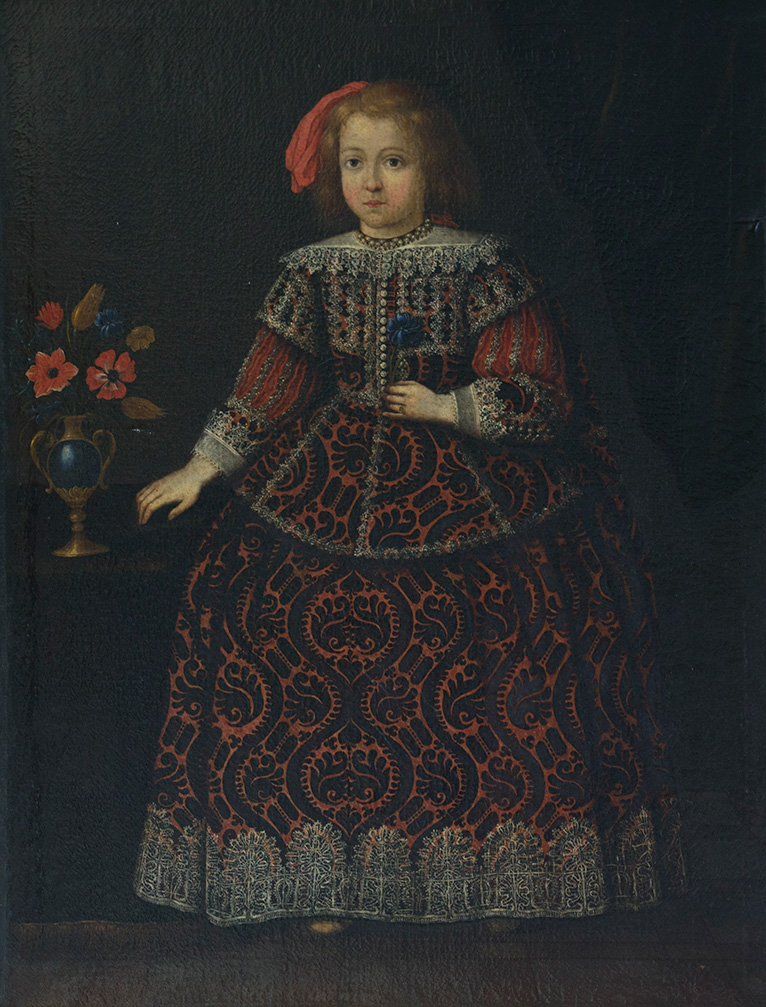Portrait of a Little Girl

Curiosity
In the foreground is a young woman wearing an elegant red brocade dress with precious black embroidery, borders and a white lace collar. The wonderful dress - typical of Spanish fashion spread in Milan in the seventeenth century - suggests that she is an exponent of the city nobility. The little girl is holding a blue flower in her right hand and with her left hand she is leaning on a table where a precious blue and gold vase with colourful flowers is placed.


Colour ranges
The dark colour ranges dominate: the background, the piece of furniture on which her hand is leaning and the floor fade into similar shades that make the space around the girl almost monochromatic. The red-brown ranges of the dress, the ribbon in her hair and the flowers stand out. Then there are three dark blue details that make the whole painting dynamic: a flower in the middle, another flower on the left and a detail of the precious vase. All the other colour ranges fade into grey.


Analysis of light
The work presents a diffused light. The face and the dress are uniformly illuminated by a light source coming from the left side which does not create strong foreshadowing contrasts, but every detail of the decoration of the fabric emerges clearly.


Study of the composition
We see an official portrait typical of the seventeenth century, with an elegantly dressed girl and behind her a background characterised by a few precious items of furniture. In this way the figure is the absolute protagonist of the scene, thus attracting the attention of the observer. It is perfectly symmetrical to the centre and can be contained in a triangular shape.
Anonymous Lombard XVII century oil on canvas 130x100 cm